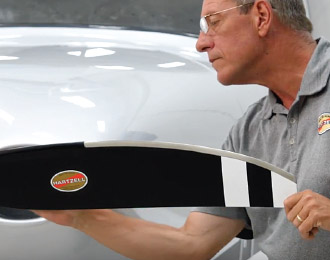
For aircraft owners, corrosion represents an ongoing and frustrating challenge. Corrosion weakens the structural integrity of a metal aircraft and its parts and can lead to expensive repairs and significant safety hazards. Left undetected and untreated, corrosion can make an aircraft unairworthy in just a matter of years.
While there’s no way to reverse corrosion once it sets in, it can be treated if the corroded area is detected in a timely manner. However, it’s much easier to take steps to deter corrosion from developing in the first place. In the third part of our series on corrosion, we’re taking a look at ways to treat and prevent aircraft corrosion.
What to do once you’ve found corrosion
So, you’ve found corrosion. Now what? There are several options, depending on the severity of the corrosion. Superficial surface corrosion can often be removed by sanding down the surface with an abrasive such as emery cloth, crocus cloth or a bristle brush. Then, the area should be treated with an anti-corrosion product and a protective layer of paint, if necessary. When corrosion is too severe, the corroded component will need to be removed and replaced by a maintenance technician. When in doubt, have a professional take a look.
Preventing and controlling corrosion
When it comes to corrosion, the best defense is a good offense. Be proactive and vigilant about inspecting your aircraft and its components to catch corrosion damage in its early stages. You can also take several preventative measures to delay the onset of corrosion:
Finally, when you are considering buying a used airplane, make it a priority to thoroughly inspect for corrosion before you make a purchase. Be wary of recently repainted aircraft offered for sale, especially if they come from coastal regions. The new paint could be covering up severe corrosion, which may only be discovered with a detailed inspection.
Corrosion should not be taken lightly. As soon as it is discovered, corrosion should be addressed to slow its progression and reduce damage to the aircraft. Luckily, corrosion can be delayed and controlled by taking the proper precautions. With regular inspections, early detection and treatment, and ongoing preventative maintenance, you can reduce the risk of corrosion and extend the service life of your airplane.